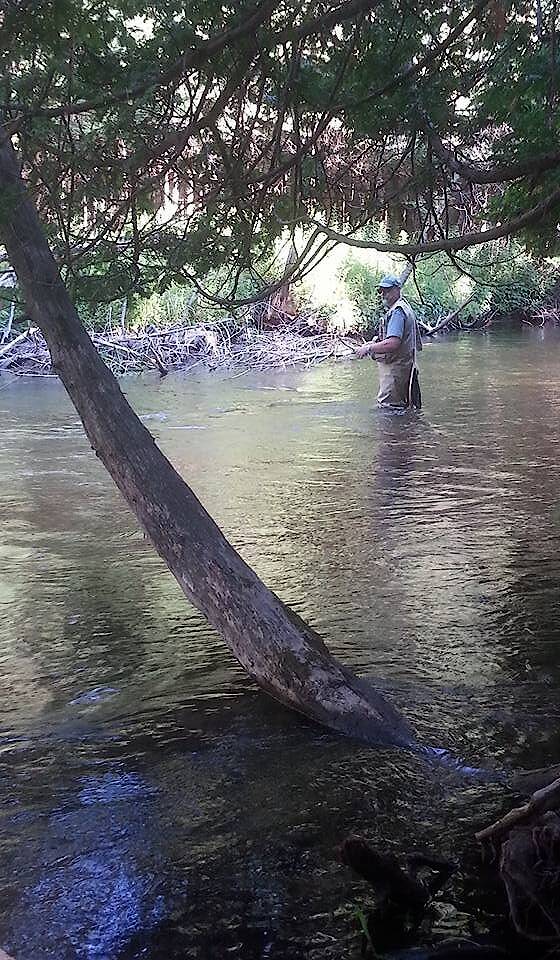
Blue-winged Olives
Baetis
Tiny Baetis mayflies are perhaps the most commonly encountered and imitated by anglers on all American trout streams due to their great abundance, widespread distribution, and trout-friendly emergence habits.
Featured on the forum

This one was surprisingly straightforward to identify. The lack of a sclerite at the base of the lateral hump narrows the field quite a bit, and the other options followed fairly obvious characteristics to Clostoeca, which only has one species, Clostoeca disjuncta.

Troutnut is a project started in 2003 by salmonid ecologist Jason "Troutnut" Neuswanger to help anglers and
fly tyers unabashedly embrace the entomological side of the sport. Learn more about Troutnut or
support the project for an enhanced experience here.
Roguerat on May 3, 2014May 3rd, 2014, 5:47 am EDT
I've been on a real bender tying emergers and cripples for the past couple weeks, sort of filling in the gap between the nymphs and duns in my fly-boxes.
In lieu of 'real' cripple hooks I'm bending ex-fine, ex-long dry-fly hooks since they're more easily bent and the length accommodates a trailing shuck.
If I ever figure out how to send some pics (have to enlist my college-age girls on this one...they're waaaay more tech-savvy) I'll do so, along with a shot or two of any fish caught on these patterns. Until then, I'm at the bench since it's in the 40's and drizzling- like it's been for the past week.
tight lines,
Roguerat
I Peter 5:7 'Cast your cares upon Him...'
In lieu of 'real' cripple hooks I'm bending ex-fine, ex-long dry-fly hooks since they're more easily bent and the length accommodates a trailing shuck.
If I ever figure out how to send some pics (have to enlist my college-age girls on this one...they're waaaay more tech-savvy) I'll do so, along with a shot or two of any fish caught on these patterns. Until then, I'm at the bench since it's in the 40's and drizzling- like it's been for the past week.
tight lines,
Roguerat
I Peter 5:7 'Cast your cares upon Him...'
Wbranch on May 3, 2014May 3rd, 2014, 11:31 am EDT
Bending a light wire dry fly hook could weaken the integrity of the heat treatment and cause a break when you hook that 20" trout. I have a large number of #10 - #14 offset point light wire hooks. If you send me your address I'll sent you an assortment.
Catskill fly fisher for fifty-five years.
Roguerat on May 3, 2014May 3rd, 2014, 12:19 pm EDT
Matt-
the last 20" Brown I hooked- and landed- was also one of my first fly-caught trout, back in '87 on the Coldwater River here in MI. Lots of 16" +/- and LOTS of 'planters' since then, though.
I was worried about breakage, but thought the 'spring' in the hook shank would make up for any issues- never considered that they'd be tempered, though. I appreciate your offer, I'll pm you my address!
Mark, aka Roguerat
I Peter 5:7 'Cast your cares upon Him...'
the last 20" Brown I hooked- and landed- was also one of my first fly-caught trout, back in '87 on the Coldwater River here in MI. Lots of 16" +/- and LOTS of 'planters' since then, though.
I was worried about breakage, but thought the 'spring' in the hook shank would make up for any issues- never considered that they'd be tempered, though. I appreciate your offer, I'll pm you my address!
Mark, aka Roguerat
I Peter 5:7 'Cast your cares upon Him...'
Quick Reply
Related Discussions
Topic
Replies
Last Reply



